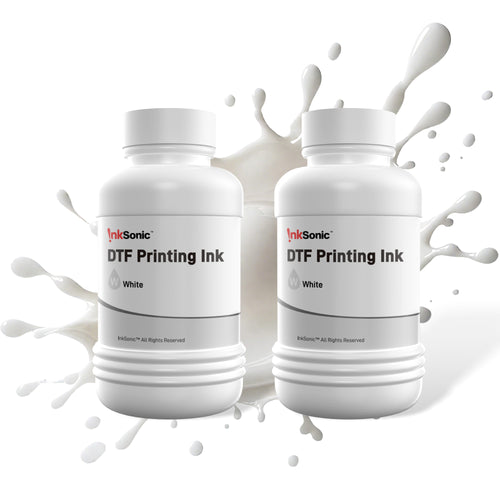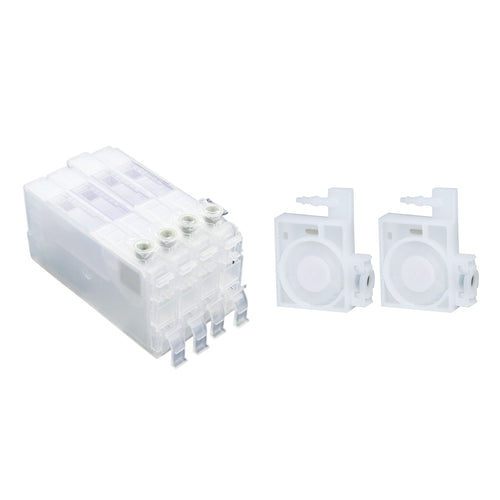With changing consumer priorities, the DTF fashion industry is also changing dramatically. From AI-driven designs and quick delivery to emotional personalization, comfort, and sustainability, new trends are fast changing the face of fashion in the future. To stay competitive, brands will need to not just adopt new technology but also understand what matters to consumers the most today. This article examines the top five DTF trends of 2025 and how they are changing the way clothes are designed and made.
Trend 1: AI Design Becomes Standard, Truly Saving Time and Effort for Users
In the past, creating a custom design meant handling everything from creativity to layout and color matching, or constantly communicating with designers. That’s no longer the case. AI design has now become standard: simply input keywords or a brief description, and in minutes, a complete design is generated with automatic color and layout adjustments.
For users, this isn’t just a flashy feature; it’s a practical time-saver:
No design skills needed: Input an idea, and AI will instantly provide multiple design options.
High efficiency, fast adjustments: Easily tweak styles, colors, and elements, allowing for quick revisions and finalization.
Inspiration generation: AI not only helps execute ideas but can also inspire unexpected creative combinations and fun concepts.
Supports quirky, humorous creations: Whether it’s a funny avatar, meme mashup, or exaggerated style, AI can quickly generate designs, perfect for creating viral hits and boosting social media engagement.
This also means businesses must upgrade their design processes and equipment to fully capitalize on the "speed" advantage AI offers. The link between inspiration and physical product is shortening, and those who can respond quickly will capture consumer interest first.

Trend 2: New Ways of Doing Business in DTF Apparel
1. DIY + Fast Delivery: "Order Today, Wear Tomorrow"
Consumers are growing more impatient—if the processing time exceeds 12 hours, they might just move on. That’s why more merchants are using portable DTF printers and heat presses to create custom designs the same day, or pre-print transfer films in bulk for on-demand heat pressing.
Live "on-site printing" broadcasts on platforms like TikTok and Instagram have become a new marketing tool.
⚡ Focus is not on radical precision of detail but on speed, visual display, and the ability to publish directly to social media for sharing.

2. It's Not Just About the Design—It's About Emotional Resonance
Having just a great design is not enough anymore. Consumers are now more focused on the story behind the design: What value does it represent? What attitude does it express? Can it evoke a personal connection?
For example, a simple cartoon cat could dramatically increase in value if framed as "a stray cat surviving on the streets through trash and sheer willpower," making the T-shirt worth $50.
💗 What people are buying isn’t just the design; it’s the emotional connection it creates.

3. From "Selling Clothes" to "Selling Emotions": Content Drives Success
In the future, it’s not the printing factory that will make money, but rather the combination of a "storyteller + stable supply chain."
Launch a limited edition series on the theme of "social anxiety," with 10 designs available for only 3 hours, selling out within minutes.
Shoot short dramas with the lead character wearing different T-shirts every day, with viewers waiting in the comments for the link.
Turn designs into NFTs, tying them to a specific community’s access pass.
💡 What you're selling is not just the pattern, but an aesthetic, attitude, and identity marker.

Trend 3: Niche Communities and Resonance Spark New Printing Demands
Rather than aiming for mass appeal, it’s more important now to create designs that are actively shared within smaller communities. People are increasingly valuing self-expression within their personal social circles—only things that are exclusive, expressive, and resonate with their values get worn, photographed, and shared.
This has led to a new trend in printed apparel: small batches, frequent updates, and strong individuality. Prints are no longer mass-produced cookie-cutter designs, but rather creations that closely align with interest groups, emotional expression, and current trends.
To meet this new demand, printing equipment must offer higher flexibility and stability:
Compatibility with various materials and design styles
Higher precision, with rich details in the design
Easy maintenance and quick responsiveness
In other words, equipment needs to keep pace with the "fast-switching" rhythm to cater to niche markets that thrive on personalization. Printing is no longer just about mass production but also about "reactiveness" and "refinement."

Trend 4: Comfort is the Key to Customer Retention
In the past, the main focus was whether the design was eye-catching, but now, comfort is the deciding factor for repeat purchases. As consumer demands shift, the wearing experience has become crucial, especially in DTF printing, where the quality of both the print and fabric directly influences whether customers will return.
Comfort of the print: While aesthetic appeal is important, comfort is the key to repeat purchases. The quality of the ink, printer performance, and temperature control system all affect print quality. High-quality, soft, eco-friendly inks make designs more comfortable, while advanced printing equipment ensures designs are uniform, durable, and free from cracks or color fading.
Skin-friendliness of material: Apart from the print, comfort is determined by the fabric. Comforting fabrics are skin-friendly and cozy to wear for extended periods, while harder materials may detract from the experience. The balance between print and material guarantees the wearer's comfort, increasing brand trustworthiness.
🎯 Tuning the user experience in the details is the key to turning "first-time buyers" into "repeat loyal customers."


Trend 5: Sustainability is no longer a Bonus but a Basic Expectation
Sustainability is no longer a nice-to-have add-on; it's becoming a minimum expectation for many consumers, especially younger generations who are more accepting of buying from brands that demonstrate responsibility.
More environmentally friendly materials: Do the transfer films degrade? Are the inks toxic to humans? These small things directly affect consumer purchasing behavior. Proper sustainability practices reduce environmental impact and make the products more attractive.
Higher environmentally sustainable production: From manufacturing to packaging and delivery, green practices of doing business are becoming an image of the brand. It is not only shopping with a clean conscience for consumers, but also supporting a business they see doing right.
Furthermore, businesses can leverage these sustainability efforts through marketing, placing them ahead of time for customers. Not only does this make the brand more appealing, but it also builds trust and goodwill. With customers increasingly shopping on values, sustainability is a mandate and an opportunity.
Conclusion
The future fashion market will not just be a marketplace of selling designs and patterns but a shared site of values, identities, and sentiments. From quick manufacturing and AI-driven design to social-inspired personalization, comfort, and sustainability, fashion is moving towards an intelligent, personalized, and responsible path. Merchants must reconcile their strategies to tap the underlying requirements in these trends to survive and grow in this dynamic market.



































